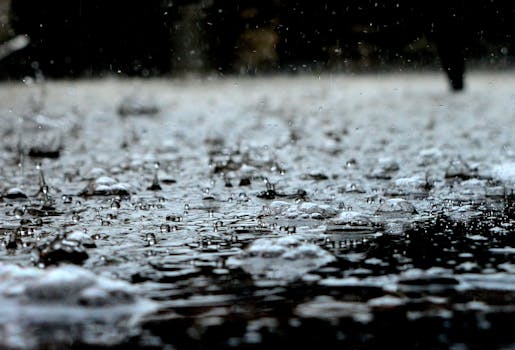Harvesting Rain Energy: Turning Droplets into Electricity
As the world grapples with the pressing need for sustainable energy solutions, innovative technologies are emerging to harness the power of nature. One such promising avenue is the harvesting of rain energy, a concept that transforms the kinetic energy of falling raindrops into usable electricity. This article explores the mechanisms behind rain energy harvesting, its potential applications, and the challenges that lie ahead.
The Science Behind Rain Energy Harvesting
Rain energy harvesting primarily relies on the principles of piezoelectricity and triboelectricity. These phenomena allow materials to generate electrical energy when subjected to mechanical stress or friction. When raindrops hit a surface, they create vibrations that can be converted into electrical energy.
- Piezoelectric Materials: Certain materials, such as quartz and ceramics, generate an electric charge when mechanically deformed. By embedding piezoelectric materials in surfaces that experience raindrop impacts, energy can be harvested effectively.
- Triboelectric Nanogenerators (TENGs): This technology exploits the contact electrification effect, where two different materials become electrically charged after coming into contact and then separating. TENGs can be designed to capture energy from raindrops as they fall and bounce off surfaces.
Real-World Applications
The potential applications of rain energy harvesting are vast and varied. Here are some notable examples:
- Smart Cities: Urban areas can integrate rain energy harvesting systems into infrastructure, such as sidewalks and roads, to power streetlights, traffic signals, and public transportation systems.
- Remote Areas: In regions with limited access to traditional power sources, rain energy harvesting can provide a sustainable energy solution for lighting, communication, and basic utilities.
- Wearable Technology: Researchers are exploring the use of rain energy harvesting in wearable devices, allowing them to charge themselves during rainy weather, thus reducing reliance on conventional charging methods.
Case Studies: Pioneering Projects
Several projects around the globe are leading the way in rain energy harvesting:
- Rain Energy Harvesting Pavement in the Netherlands: A pilot project in Amsterdam has implemented piezoelectric tiles in pedestrian walkways. These tiles generate electricity from the footsteps of pedestrians and raindrops, contributing to the city’s energy needs.
- Triboelectric Nanogenerator Research in China: Researchers at the University of Science and Technology of China have developed a TENG that can generate electricity from raindrops. Their experiments showed that a single raindrop could produce enough energy to power small electronic devices.
Challenges and Limitations
Despite its potential, rain energy harvesting faces several challenges:
- Energy Efficiency: The amount of energy generated from raindrops is relatively small compared to other renewable sources like solar or wind energy. This limits its standalone viability.
- Weather Dependency: The effectiveness of rain energy harvesting systems is directly tied to weather conditions, making them less reliable in arid regions or during prolonged dry spells.
- Material Durability: The materials used in energy harvesting systems must withstand harsh weather conditions and physical wear over time, which can increase maintenance costs.
The Future of Rain Energy Harvesting
As technology advances, the future of rain energy harvesting looks promising. Ongoing research aims to improve the efficiency and durability of harvesting systems, making them more viable for widespread use. Additionally, integrating rain energy harvesting with other renewable energy sources could create hybrid systems that enhance overall energy production.
Conclusion
Harvesting rain energy presents an innovative solution to the growing demand for sustainable energy. By converting the kinetic energy of raindrops into electricity, we can tap into a natural resource that is often overlooked. While challenges remain, the potential applications and successful case studies highlight the importance of continued research and investment in this field. As we strive for a greener future, rain energy harvesting could play a crucial role in diversifying our energy portfolio and reducing our reliance on fossil fuels.
